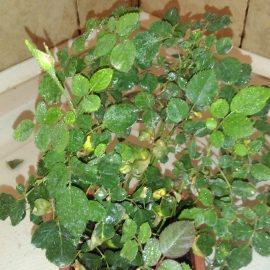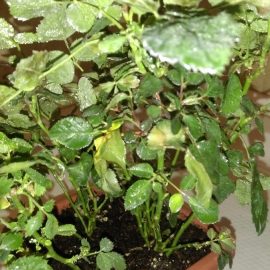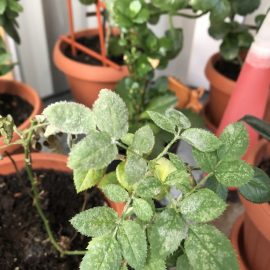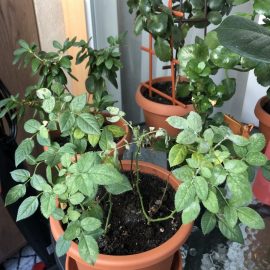Powdery mildew – identify and control

Powdery mildew is a disease caused by various pathogenic fungi. The disease causes significant damage to plants grown in the greenhouse or the field, in years with cold and wet springs, followed by dry summers.
1. Peach powdery mildew, Sphaerotheca pannosa var. Persicae
Symptoms. The attack first appears on the young leaves at the top of the shoots, in the form of white, powdery spots, which can enlarge and occupy the entire surface. The affected leaves look dusty, deformed, wrinkle, and eventually dry out. The attack on the well-developed leaves appears in the form of contoured spots. Next to them, a denser and dustier-looking growth is formed, due to the formation of spores. The non-lignified shoots can be covered with powdery dust. The strong ones bend, wither and then dry out. The attack on the young or mature leaves is similar to that which appears on the developed leaves. Near the whitish spots, the tissues of the fruit turn brown, crack and begin to rot.
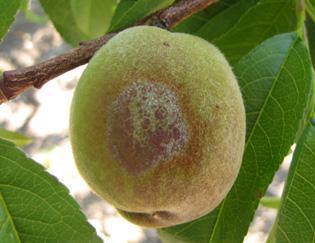
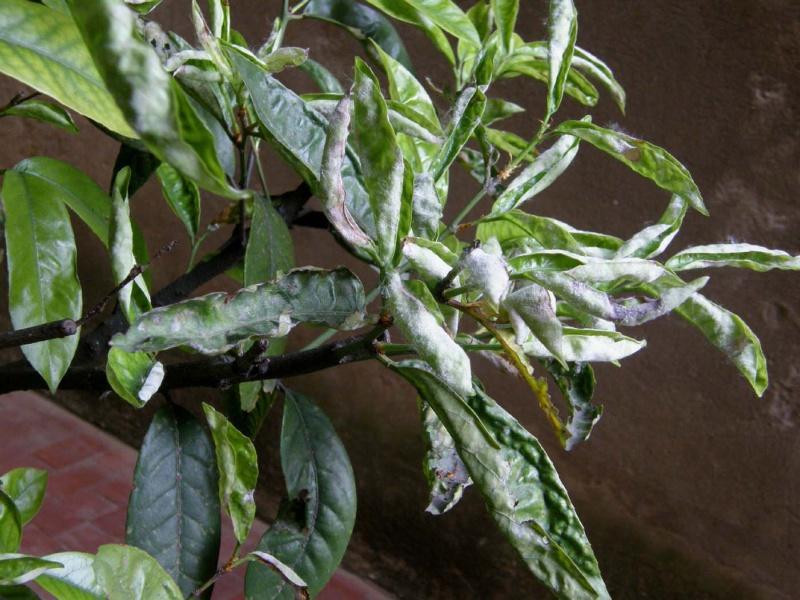

The pathogen is Sphaerotheca pannosa var. persicae fc oidium leucoconium. Its overwintering is done by resistance mycelium located in buds or by cleistothecia that form in autumn in the ectoparasitic mycelium. In the spring, the resistant mycelium enters the vegetation and infects the peach shoots.
Prevention and control. Prevention of the peach powdery mildew can be achieved by pruning and burning the attacked shoots. During the growing season, after the appearance of the disease, treatments will be made with specific fungicides.
Recommended products
-
You can find products on a different store
Change Store -
You can find products on a different store
Change Store -
You can find products on a different store
Change Store -
You can find products on a different store
Change Store -
You can find products on a different store
Change Store -
You can find products on a different store
Change Store -
You can find products on a different store
Change Store -
You can find products on a different store
Change Store -
You can find products on a different store
Change Store -
You can find products on a different store
Change Store -
You can find products on a different store
Change Store -
You can find products on a different store
Change Store -
You can find products on a different store
Change Store -
You can find products on a different store
Change Store -
You can find products on a different store
Change Store -
You can find products on a different store
Change Store -
You can find products on a different store
Change Store -
You can find products on a different store
Change Store -
You can find products on a different store
Change Store -
You can find products on a different store
Change Store -
You can find products on a different store
Change Store -
You can find products on a different store
Change Store -
You can find products on a different store
Change Store -
You can find products on a different store
Change Store
2. Rose powdery mildew (Sphaerotheca pannosa var. rosae)
Rose powdery mildew, Sphaerotheca pannosa var. rosae is widespread in all countries manifesting itself both in field crops and in those in protected areas.
Symptoms. The rose powdery mildew is manifested on leaves, young branches, flower buds, or even on fruits, during the whole growing season. Irregular spots in size and shape, white, with a powdery appearance appear on both sides of the attacked leaves when the asexual part of the fungus is formed, respectively of the conidiophores with conidia. As the attack progresses, the spots enlarge and partially or completely cover the leaf. They turn yellow, turn brown, wither and drop. The attacked young branches are covered with a thick, whitish powdery dust at first. In a more advanced stage of the disease, it acquires a yellow color. In autumn, in the mycelium on the branches, the fungus differentiates the cleistothecia that have the appearance of small, brown spots. The attacked branches do not lignify properly and suffer frost injury during the winter. Frequently, the affected flower buds are covered with powdery growth, remain smaller, and no longer form flowers. Sometimes the attacked flowers are deformed, small.
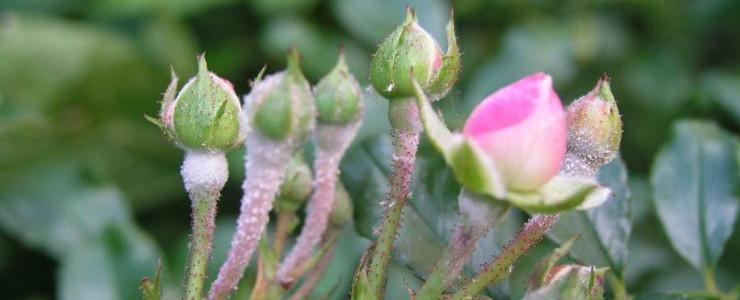
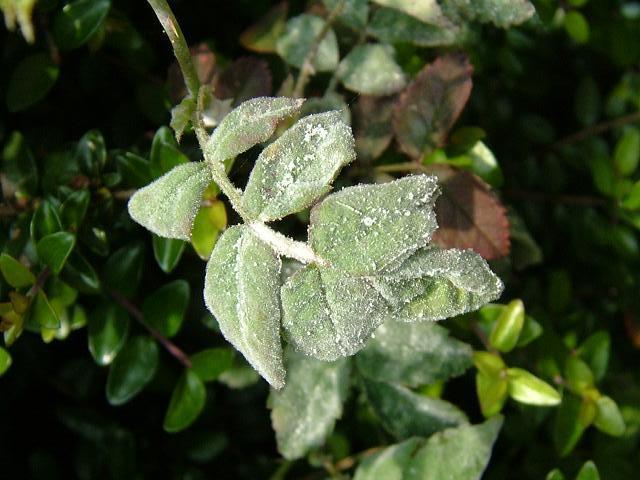
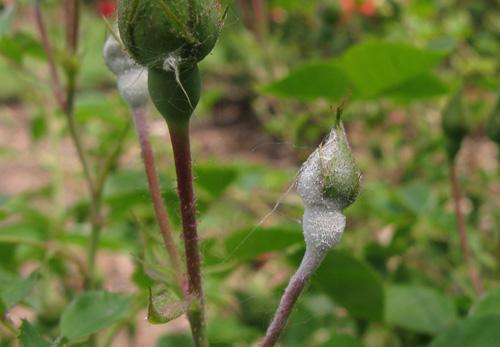
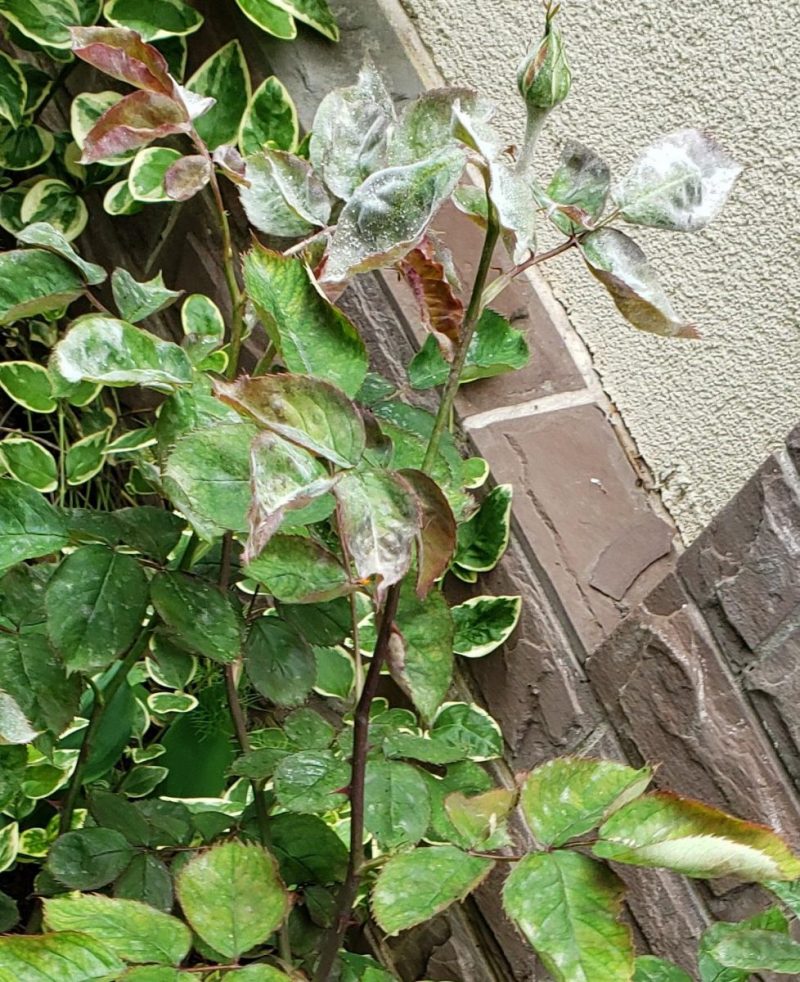
The pathogen is Sphaerotheca pannosa var. rosae. The fungus lasts from one year to the next in the form of cleistothecia and resistance mycelium in buds or on branches, especially at the base of thorns.
Prevention and control. To prevent the disease, the strongly attacked shoots will be pruned and burned. In protected areas, ventilation will be done frequently to reduce atmospheric humidity. Specific fungicide treatments are required during the growing season.
Recommended products
-
You can find products on a different store
Change Store -
You can find products on a different store
Change Store -
You can find products on a different store
Change Store -
You can find products on a different store
Change Store -
You can find products on a different store
Change Store -
You can find products on a different store
Change Store -
You can find products on a different store
Change Store -
You can find products on a different store
Change Store -
You can find products on a different store
Change Store -
You can find products on a different store
Change Store -
You can find products on a different store
Change Store -
You can find products on a different store
Change Store -
You can find products on a different store
Change Store -
You can find products on a different store
Change Store -
You can find products on a different store
Change Store -
You can find products on a different store
Change Store -
You can find products on a different store
Change Store -
You can find products on a different store
Change Store -
You can find products on a different store
Change Store -
You can find products on a different store
Change Store -
You can find products on a different store
Change Store -
You can find products on a different store
Change Store -
You can find products on a different store
Change Store -
You can find products on a different store
Change Store
3. Apple powdery mildew (Podosphaera leucotricha )
Apple powdery mildew, Podosphaera leucotricha fc oidium farinosum is present on all continents and affects apple trees orchards.
Symptoms. The disease manifests itself throughout the growing season, from bud burst until leaf fall, with higher intensity during May and early June. Leaves, flowers, shoots, and sometimes young fruits are attacked. The attack on the young leaves appears in the form of a whitish, powdery growth that covers both sides of the leaf. In a short time, the leaves curl up slightly, are less elastic, and dry out prematurely.
The fungus quickly attacks the young shoots, which it covers with whitish, powdery growth, due to the formation of spores, and towards autumn it turns brown after the formation of the pathogen fructifications. Strongly attacked shoots bend in the shape of a hook and dry. The attacked flowers have deformed petals, sometimes even split in two, lose their white-pink color and become white, and in some cases thicken, wither, and turn brown.
The attacked flowers, dry out without forming fruit. In apple varieties susceptible to powdery mildew, this form of attack leads in some years to significant crop losses. The attack on the young fruits causes a stop of the growth and in some cases, even a fall of them.



The pathogen is Podosphaera leucotricha fc oidium farinosum. The fungus overwinters as a mycelium in vegetative or flower buds, which were infected in the previous season. In spring, after the end of the dormancy period, the powdery mildew fungus resumes growth and colonizes developing shoots causing primary infections.
Prevention and control. In Toevent the disease, it is recommended that the strongly attacked shoots be permanently pruned and destroyed by burning and also the cultivation of resistant apple varieties. During the growing season, treatments with specific fungicides will be applied.
Recommended products
-
You can find products on a different store
Change Store -
You can find products on a different store
Change Store -
You can find products on a different store
Change Store -
You can find products on a different store
Change Store -
You can find products on a different store
Change Store -
You can find products on a different store
Change Store -
You can find products on a different store
Change Store -
You can find products on a different store
Change Store -
You can find products on a different store
Change Store -
You can find products on a different store
Change Store -
You can find products on a different store
Change Store -
You can find products on a different store
Change Store -
You can find products on a different store
Change Store -
You can find products on a different store
Change Store -
You can find products on a different store
Change Store -
You can find products on a different store
Change Store -
You can find products on a different store
Change Store -
You can find products on a different store
Change Store -
You can find products on a different store
Change Store -
You can find products on a different store
Change Store -
You can find products on a different store
Change Store -
You can find products on a different store
Change Store -
You can find products on a different store
Change Store -
You can find products on a different store
Change Store
4. Cereals powdery mildew (Blumeria graminis )
This disease manifests itself every year on cereals and spontaneous grasses. The frequency and intensity of the attack depend also on the cultivated variety and evolution of the climatic conditions.
Symptoms. In autumn, white, powdery spots of varying sizes may appear on the leaves, which can be indicated on both sides of the leaves. In the spring, the attack spreads, with white spots on the upper parts, on the leaf, on the stalks, and even on the ears. Under the white growth, the tissues of the leaves turn yellow and then turn brown. The white spots soon acquire a dusty, powdery appearance.

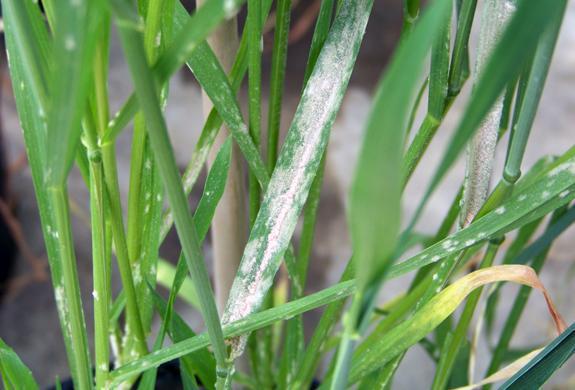
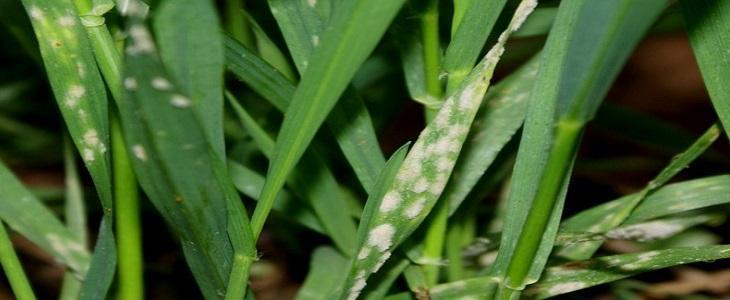
The pathogen is Blumeria graminis fc oidium moniliodes. The biological cycle of the fungus begins in autumn, after the wheat sprouts, and is due to the biological reserve of conidia or ascospores on the plant debris. These autumn infections go unnoticed but are the main source of the disease in the spring because the pathogen resists in the form of resistance mycelium in the attacked organs and the form of cleistothecia.
Prevention and control. To prevent the attack of wheat powdery mildew, it is recommended to avoid monoculture, rational administration of fertilizers, sowing at the right time, density and depth of sowing, use of healthy seeds, cultivation of resistant varieties. Chemical control is performed with specific fungicides.
Recommended products
-
You can find products on a different store
Change Store -
You can find products on a different store
Change Store -
You can find products on a different store
Change Store -
You can find products on a different store
Change Store -
You can find products on a different store
Change Store -
You can find products on a different store
Change Store -
You can find products on a different store
Change Store -
You can find products on a different store
Change Store -
You can find products on a different store
Change Store -
You can find products on a different store
Change Store -
You can find products on a different store
Change Store -
You can find products on a different store
Change Store -
You can find products on a different store
Change Store -
You can find products on a different store
Change Store -
You can find products on a different store
Change Store -
You can find products on a different store
Change Store -
You can find products on a different store
Change Store -
You can find products on a different store
Change Store -
You can find products on a different store
Change Store -
You can find products on a different store
Change Store -
You can find products on a different store
Change Store -
You can find products on a different store
Change Store -
You can find products on a different store
Change Store -
You can find products on a different store
Change Store
5. Grapevine powdery mildew (Uncinula necator )
Grapevine powdery mildew, Uncinula necator, is a disease native to North America and is considered one of the most damaging diseases in vineyards.
Symptoms. Grapevine powdery mildew attacks leaves, young shoots, grape clusters, from spring to late autumn. On the leaves, there is a fine mycelium, like a spider’s web, with a powdery appearance. It enlarges and covers both sides of the leaf. Under the powdery dust, the tissues turn brown or slightly red, but the leaves do not fall until autumn. The non-lignified shoots have the same whitish spots, are sometimes dusty, don’t grow, and the leaves wrinkle.
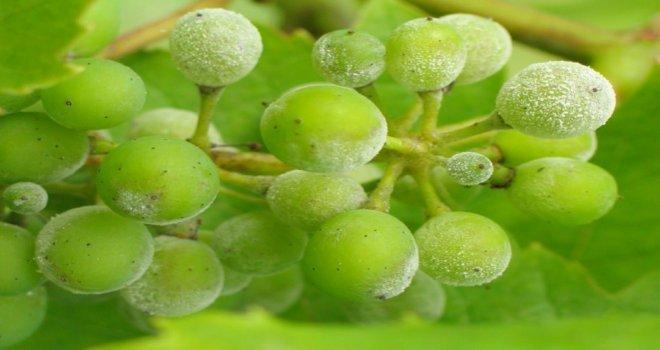
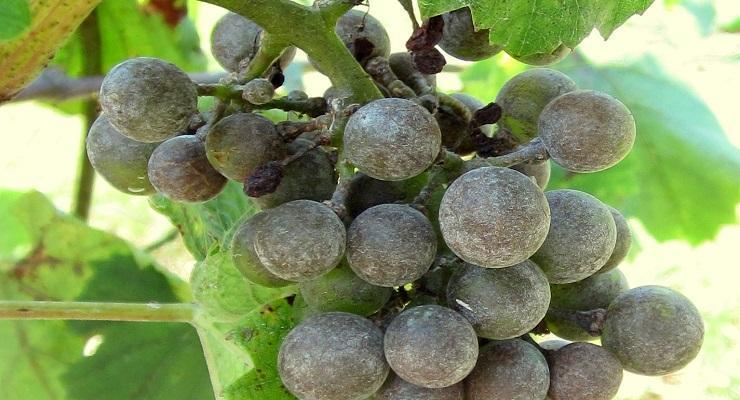
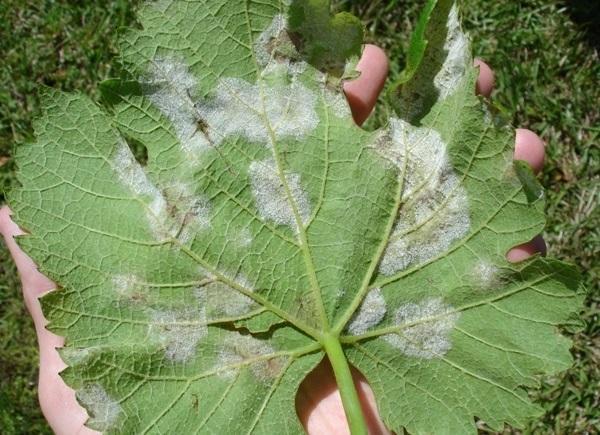
The attack on the clusters causes them to turn brown and then dry out during a drought. The powdery dust also covers the berries., which, as a result of the increase in volume, often crack. Then their contents drain out, providing an excellent environment for the development of other fungal diseases. In dry weather, the berries dry out, the seeds stand out, and the grape bunches, destroyed, the smell of mold. In rainy autumns, the berries attacked by powdery mildew are covered with gray rot, the damage can be very large. Towards autumn, on the powdery dust, the presence of resistance fructifications is sometimes noticed. These appear as small, black dots. The late attacks on the ripe depreciate the quality of the grapes. Numerous brown spots form on their surface.
The pathogen is Uncinula necator. The fungus overwinters as a resistant mycelium that can remain on the canes or more frequently in the buds. In the spring, once the grapevines start to grow at the beginning of the growing season, the mycelium begins to vegetate. It spreads and differentiates conidiophores and conidia through which primary infections occur. The disease is favored by higher temperatures, around 20-25 ° C, when the incubation period is 7-10 days, a situation often encountered in dry summers.
After the infections have occurred, the evolution of the disease is favored by temperatures between 18-25 ° C and moderate relative humidity, when the attack on grapes causes particularly great damage. The spores do not germinate in the water droplets, and the heavy rains prevent the evolution of the disease.
Prevention and control. To reduce the source of infection in the vineyard, it is recommended that the attacked shoots be pruned and destroyed by burning. Also, it is very important the correct application of maintenance work (pruning, weed control), as well as the administration of fertilizers, avoiding excess nitrogen. During the growing season, it is recommended to apply treatments with specific fungicides.
Recommended products
-
You can find products on a different store
Change Store -
You can find products on a different store
Change Store -
You can find products on a different store
Change Store -
You can find products on a different store
Change Store -
You can find products on a different store
Change Store -
You can find products on a different store
Change Store -
You can find products on a different store
Change Store -
You can find products on a different store
Change Store -
You can find products on a different store
Change Store -
You can find products on a different store
Change Store -
You can find products on a different store
Change Store -
You can find products on a different store
Change Store -
You can find products on a different store
Change Store -
You can find products on a different store
Change Store -
You can find products on a different store
Change Store -
You can find products on a different store
Change Store -
You can find products on a different store
Change Store -
You can find products on a different store
Change Store -
You can find products on a different store
Change Store -
You can find products on a different store
Change Store -
You can find products on a different store
Change Store -
You can find products on a different store
Change Store -
You can find products on a different store
Change Store -
You can find products on a different store
Change Store
6. Tomato powdery mildew (Leveillula taurica)
Tomato powdery mildew, Leveillula taurica, is a disease that causes significant damage to tomatoes crops.
Symptoms. The fungus can attack all aerial organs, but it is especially noticeable first on the basal leaves and then, it is present on the upper leaves. The affected leaves have yellow spots on the upper part, and on the lower part of the leaf, the area is covered with a white-gray mycelium, with a powdery appearance. The affected tissues turn brown, the leaves dry out completely. On the attacked plants, a small number of fruits are formed, smaller in size, which reaches late maturity. The fungus causes greater damage in crops in protected areas, where its evolution is favored by temperatures between 18-24°C and humidity of 70-82%. Eggplant, peppers, artichokes, and even some pumpkins are part of the circle of host plants of this pathogen.
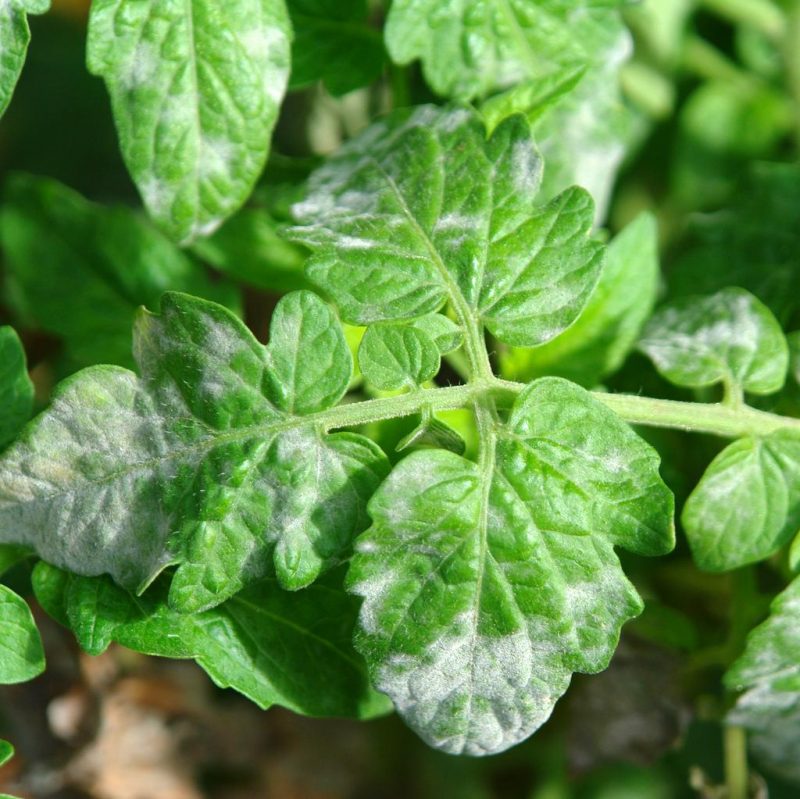
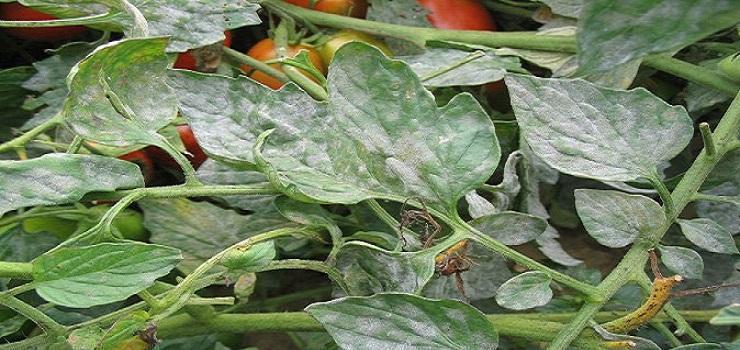
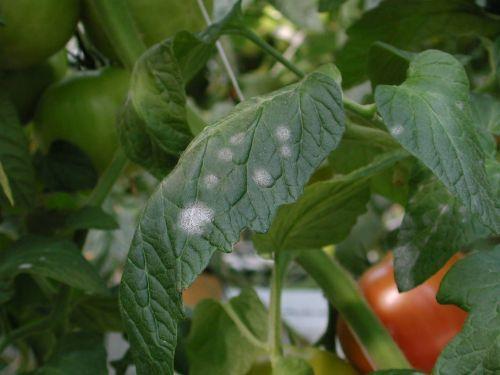
The pathogen is Leveillula taurica. The fungus resists in the soil on plant debris in the form of resistant fructifications, from which next year will emerge spores that can cause new infections. During the growing season, the spores carried by the wind, the drops of rainwater, or the irrigation water, ensure the spread of the fungus.
Prevention and control. To prevent tomato powdery mildew, it is recommended to gather the plant’s debris and burn them, and crop rotation. During the growing season, the application of specific fungicides is recommended.
Recommended products
-
You can find products on a different store
Change Store -
You can find products on a different store
Change Store -
You can find products on a different store
Change Store -
You can find products on a different store
Change Store -
You can find products on a different store
Change Store -
You can find products on a different store
Change Store -
You can find products on a different store
Change Store -
You can find products on a different store
Change Store -
You can find products on a different store
Change Store -
You can find products on a different store
Change Store -
You can find products on a different store
Change Store -
You can find products on a different store
Change Store -
You can find products on a different store
Change Store -
You can find products on a different store
Change Store -
You can find products on a different store
Change Store -
You can find products on a different store
Change Store -
You can find products on a different store
Change Store -
You can find products on a different store
Change Store -
You can find products on a different store
Change Store -
You can find products on a different store
Change Store -
You can find products on a different store
Change Store -
You can find products on a different store
Change Store -
You can find products on a different store
Change Store -
You can find products on a different store
Change Store
7. Cucurbits powdery mildew (Sphaerotheca fuliginea)
Cucurbits powdery mildew, Sphaerotheca fuliginea is a widespread disease in many countries and causes significant damage due to the fast drying of the leaves.
Symptoms. The disease manifests itself on the aerial organs (stems, leaves, fruits in all stages of development). On the surface of the attacked organs appears white, powdery spots, in the form of more or less extensive patches. On the surfaces of the leaves, the spots can join and cover large areas that soon dry out. Under this mycelium, the tissues turn yellow and brown. In conditions of atmospheric drought, the attack extends to the stems and even fruits. The optimal conditions for the installation and evolution of cucurbits powdery mildew are the temperature of 15-21 ° C and high humidity.
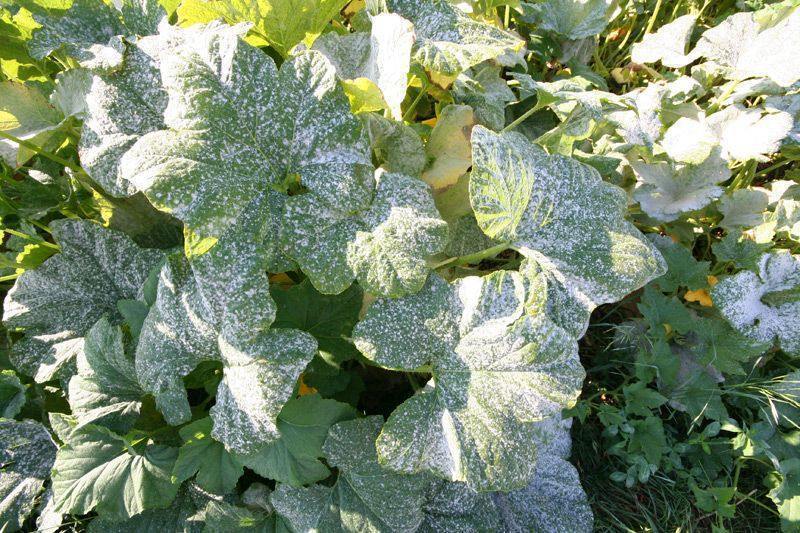
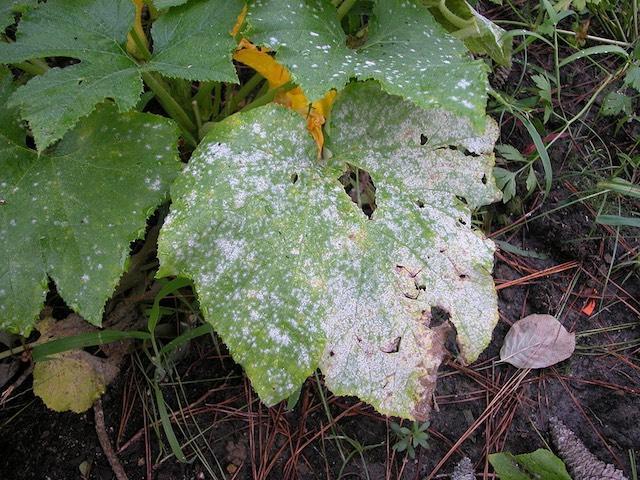
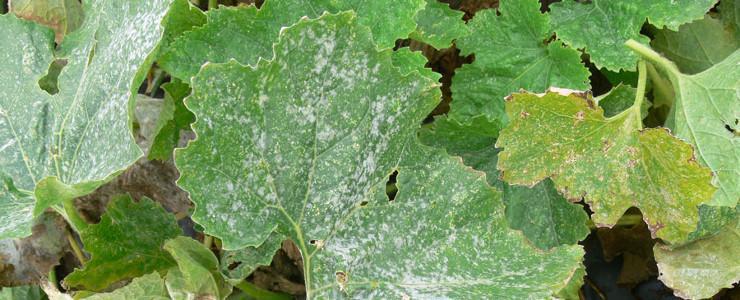
The pathogen is Sphaerotheca fuliginea. The fungus spreads during the growing season through spores carried by the wind, water, or insects. The most commonly infected are the mature leaves, while the newly formed ones are more resistant. The resistance fructifications have the appearance of small, black dots, are formed on the leaves and ensure the transmission of the pathogen until the following year.
Prevention and control. It is recommended crop rotation, gathering and destroying plant debris, cultivating resistant varieties. During the growing season, the application of specific fungicides is recommended.
Recommended products
-
You can find products on a different store
Change Store -
You can find products on a different store
Change Store -
You can find products on a different store
Change Store -
You can find products on a different store
Change Store -
You can find products on a different store
Change Store -
You can find products on a different store
Change Store -
You can find products on a different store
Change Store -
You can find products on a different store
Change Store -
You can find products on a different store
Change Store -
You can find products on a different store
Change Store -
You can find products on a different store
Change Store -
You can find products on a different store
Change Store -
You can find products on a different store
Change Store -
You can find products on a different store
Change Store -
You can find products on a different store
Change Store -
You can find products on a different store
Change Store -
You can find products on a different store
Change Store -
You can find products on a different store
Change Store -
You can find products on a different store
Change Store -
You can find products on a different store
Change Store -
You can find products on a different store
Change Store -
You can find products on a different store
Change Store -
You can find products on a different store
Change Store -
You can find products on a different store
Change Store














































































































































































































































































































































































































































